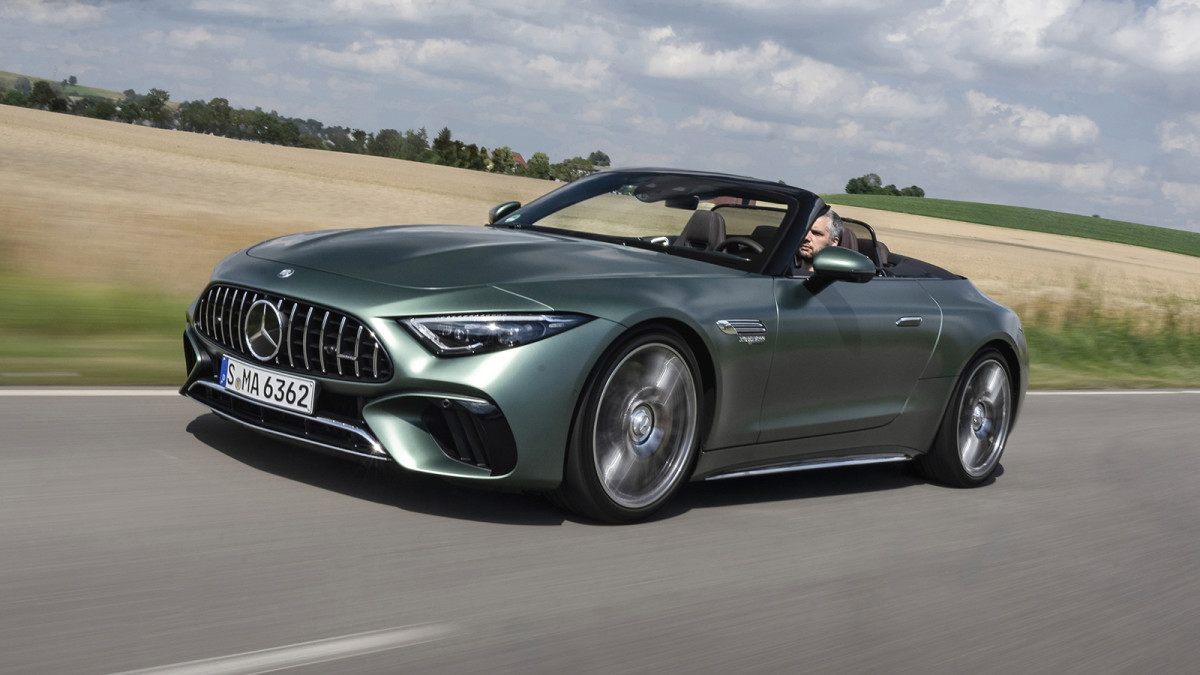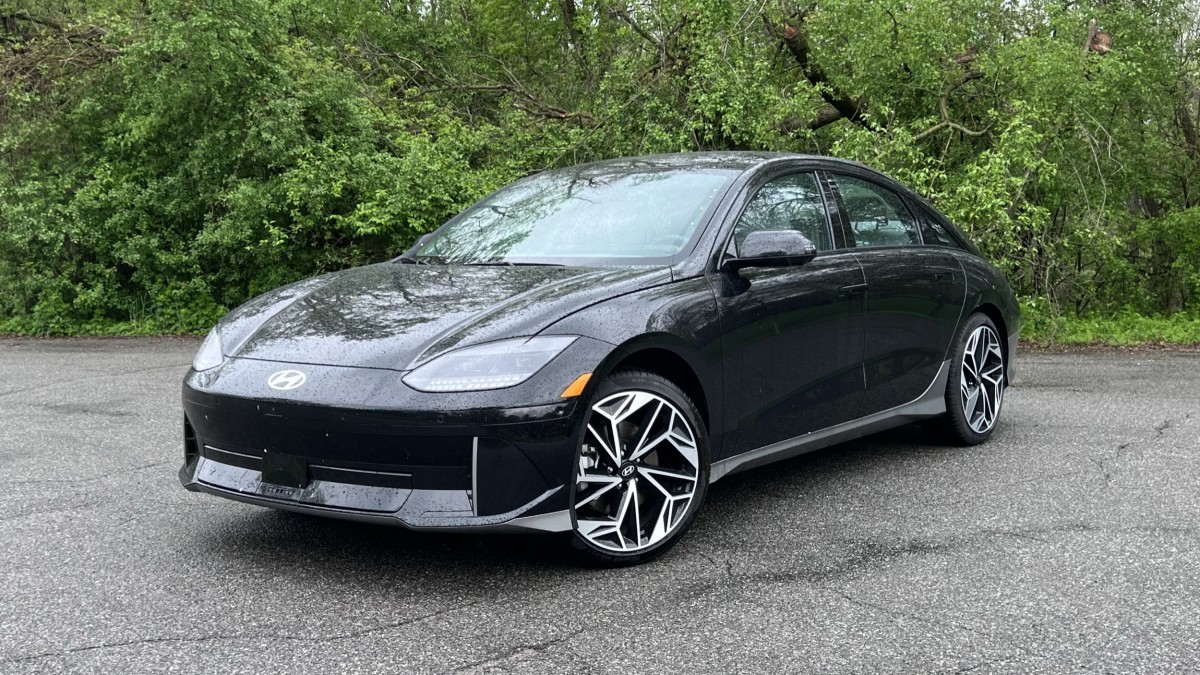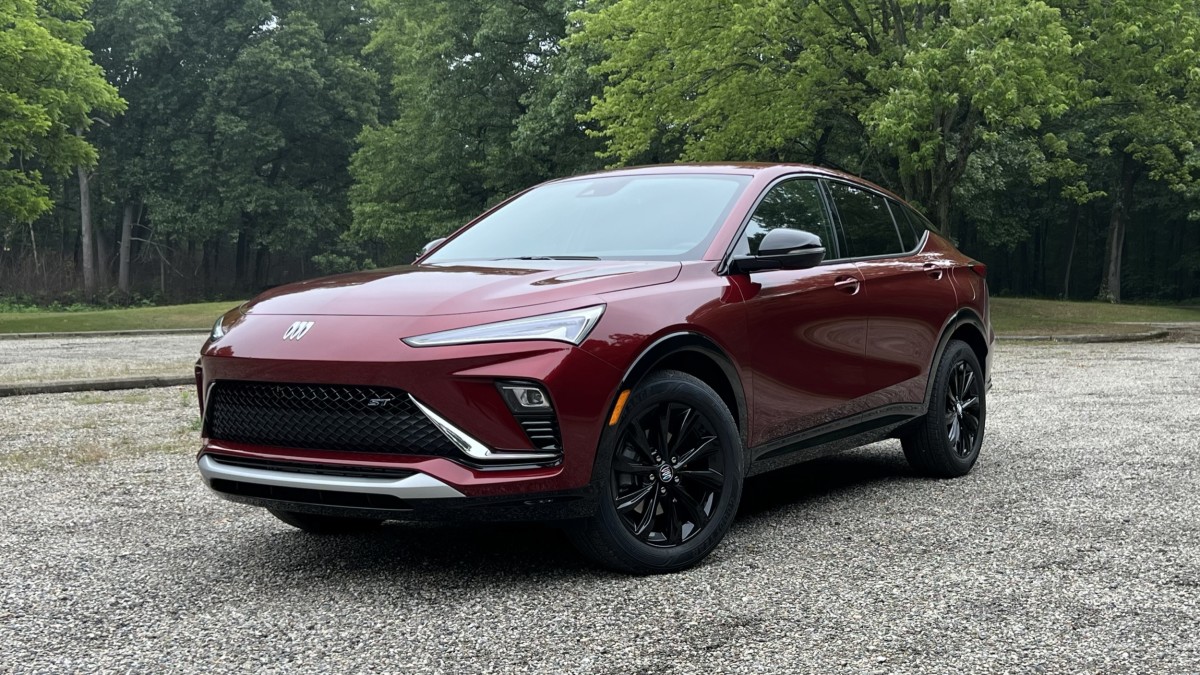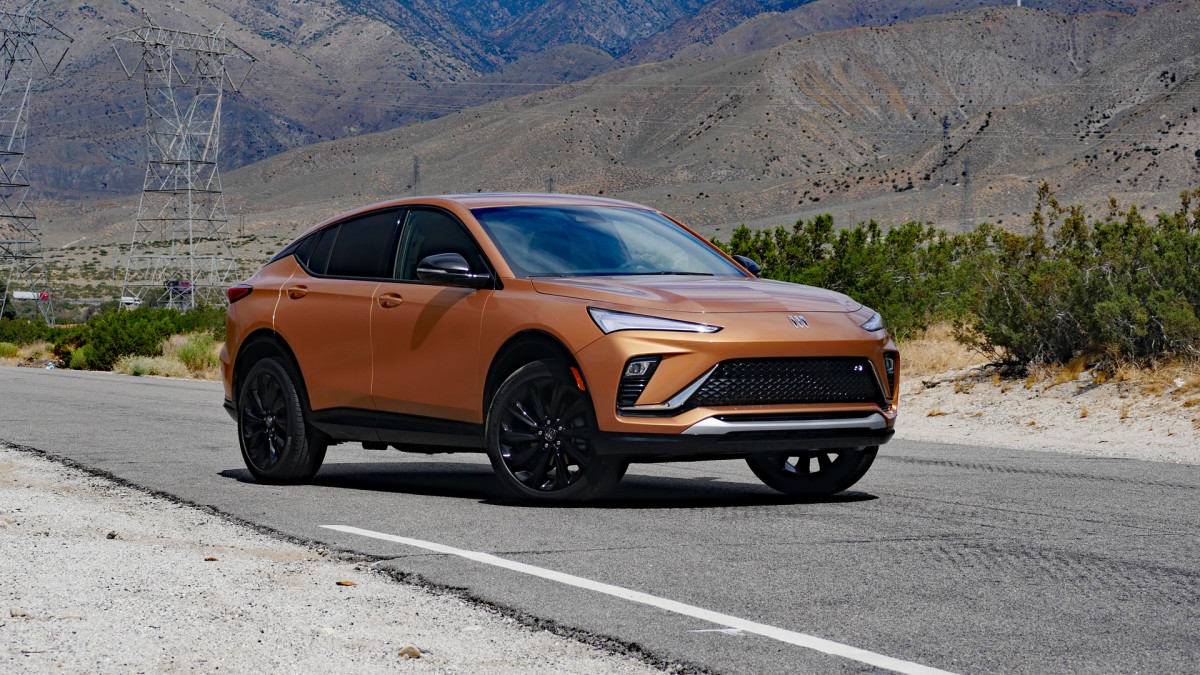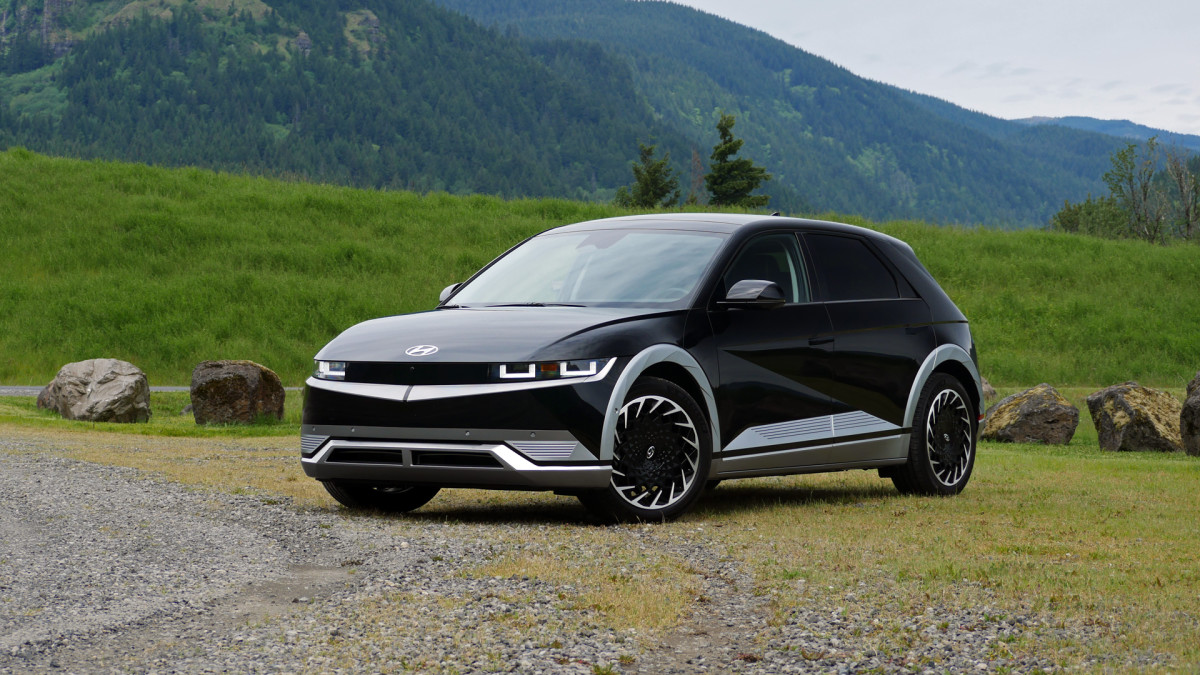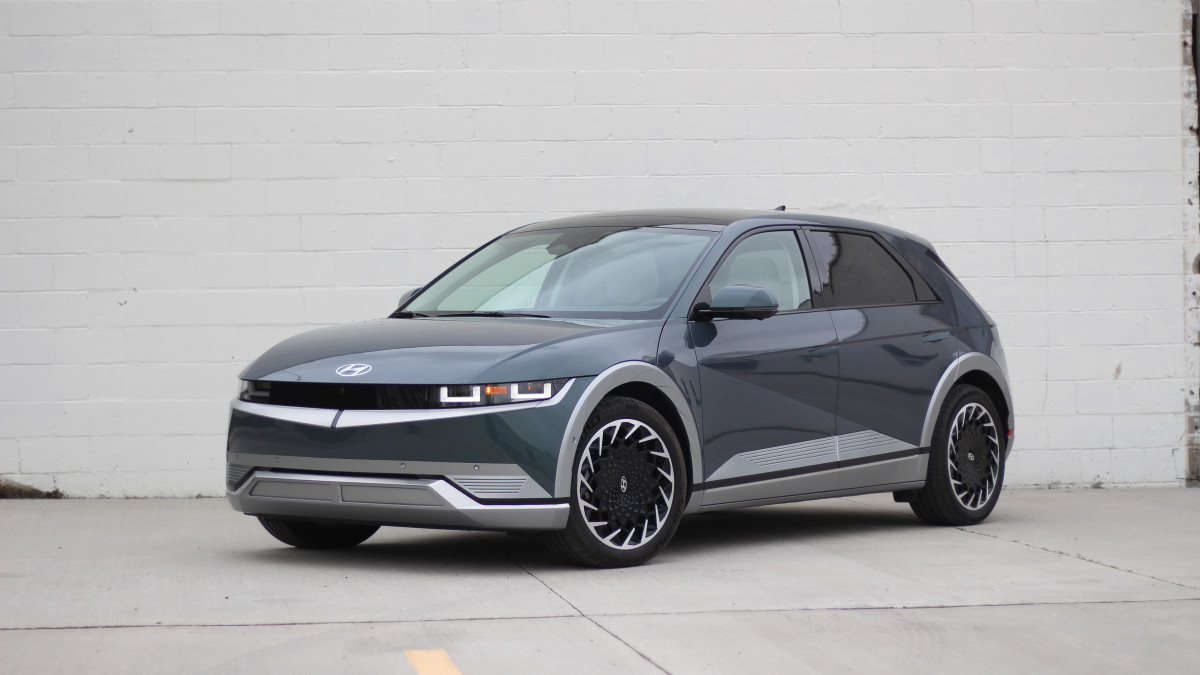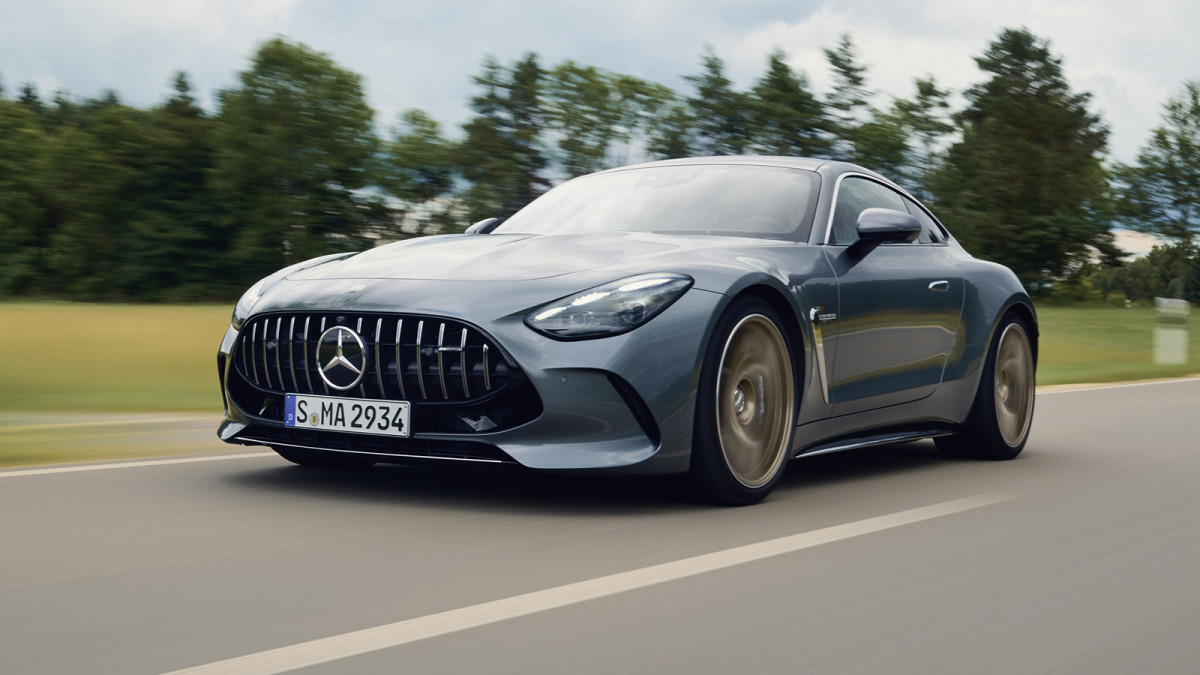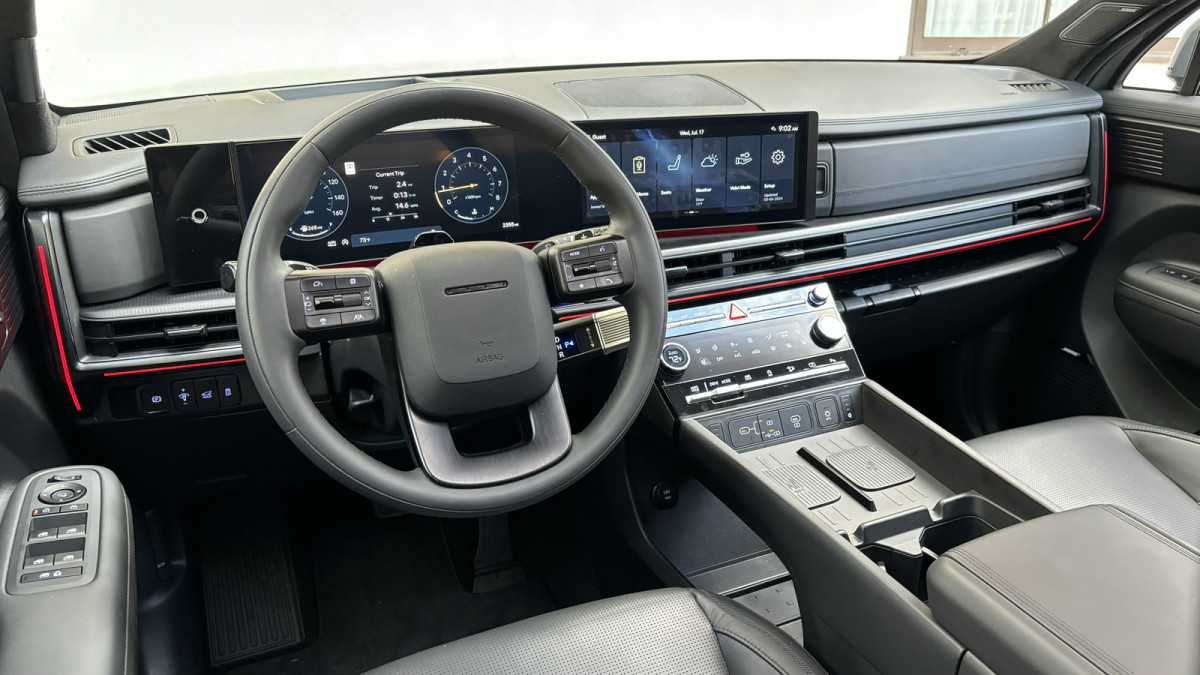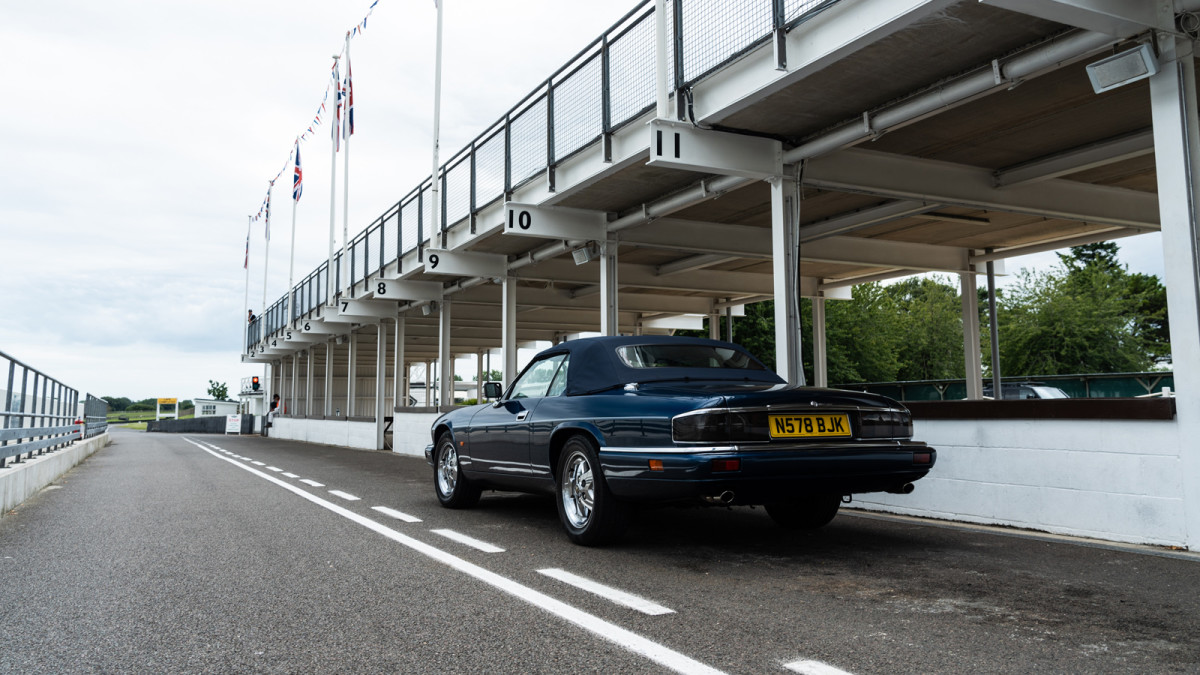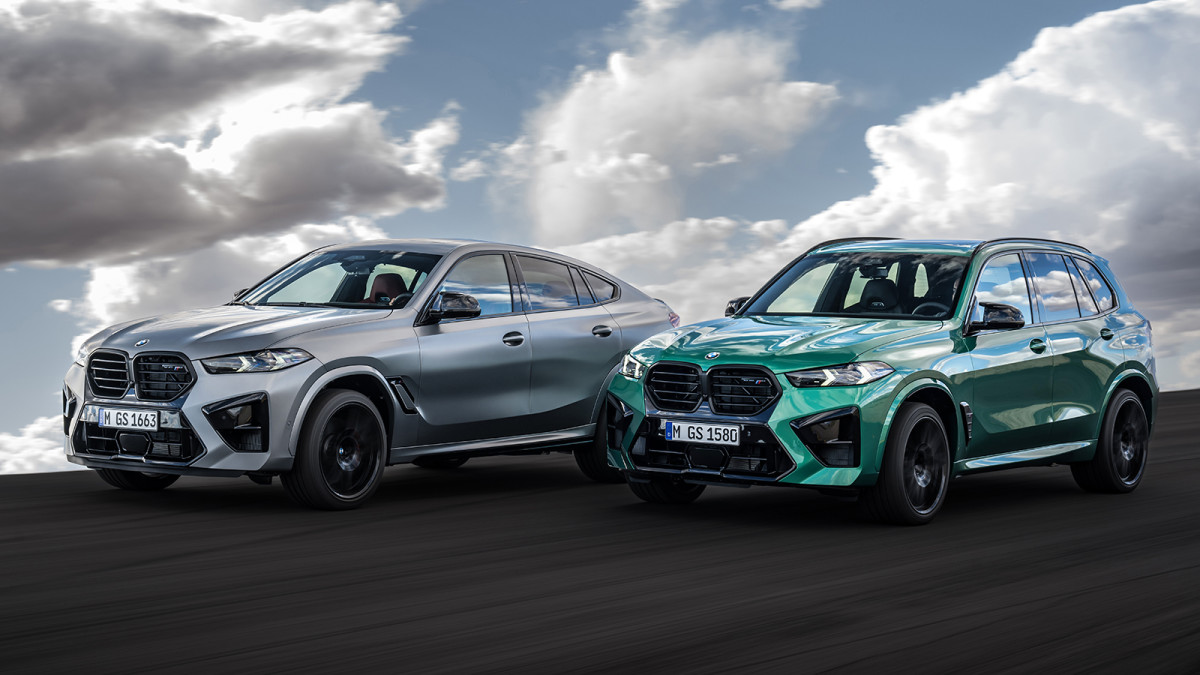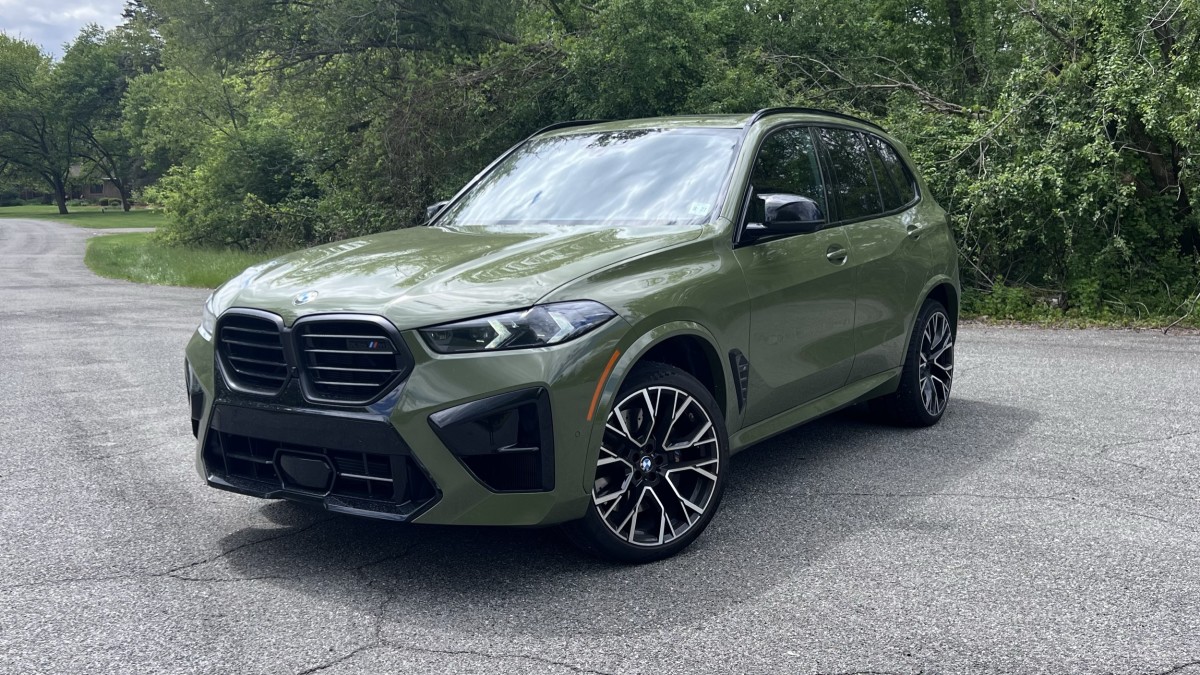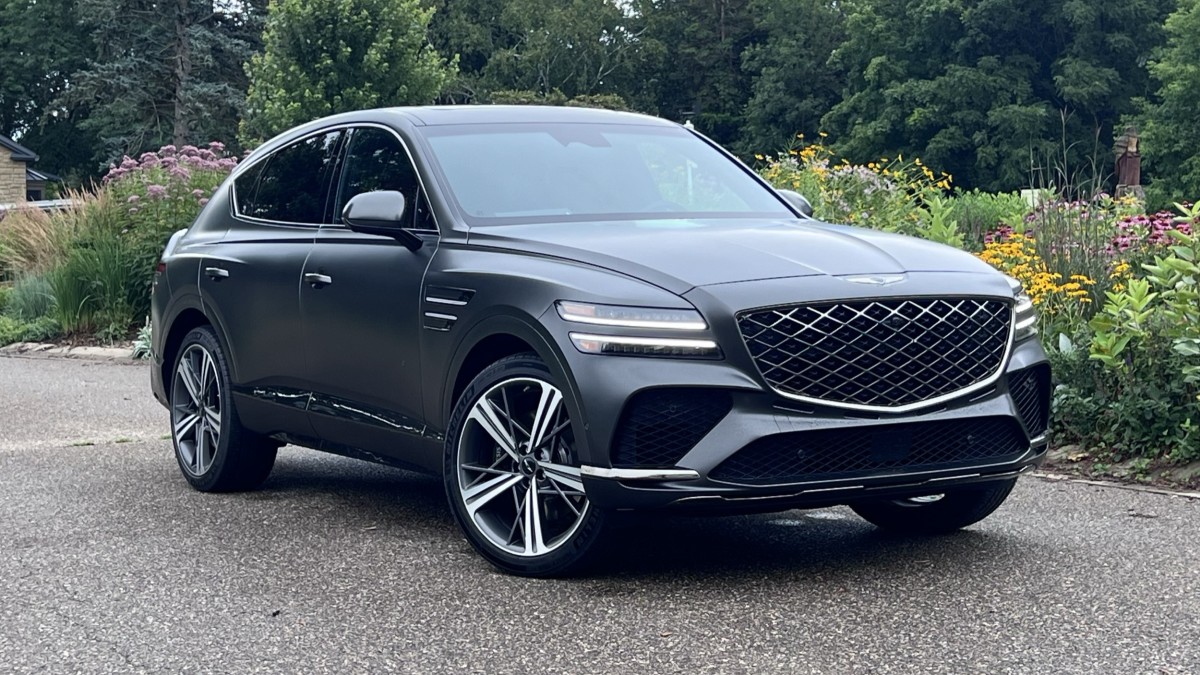
John Beltz Snyder

John Beltz Snyder
MINNEAPOLIS — The Genesis GV80 is a decidedly solid vehicle that we’ve called out for its compelling design, richly contented interior, decent power and useful tech. It’s a luxury SUV that offers an interesting option to its more expensive German rivals. So what’s next? Well, following in the footsteps of the Germans, it’s time for Genesis to coupe-ify its flagship SUV. The BMW X5 has its X6 sibling; Audi has its Sportbacks; Porsche and Mercedes have Coupe versions of their midsize SUVs … now Genesis is offering the GV80 Coupe. It too has a sleeker roofline that degrades practicality, but it also turns up the heat with a supercharged engine option.
First, there are the obvious changes, and those start with the roofline from the B-pillar back. The steeper slope extends into an aggressive and dynamically shaped roof spoiler. Unlike the SUV’s more horizontal spoiler, the Coupe’s dips in the middle to create a sporty double-spoiler look. Below that is the aggressively raked liftgate, bisected horizontally by a large, lower lip spoiler. Its two-line taillights wrap across the corners onto the shapely curvature of the lower liftgate. The Coupe gets even more athletic touches below, like a sleeker lower fascia with prominent quad exhaust tips.
Further, less obvious design choices continue to set the Coupe apart as the sportier sibling to the more practical SUV. Up front, it gets its own version of the Genesis crest grille, with two layers of mesh providing both a three-dimensional effect and further protection to the internals behind it. The front bumper gets a larger air curtain, flanked by bigger air intakes at the fascia’s lower corners. From the side, the Coupe’s flush roof rails provide a more slippery silhouette (which helps to dramatize the new roofline), while exclusive wheels provide further attitude that the SUV doesn’t get. We especially liked the look of the 22-inch dark gray matte wheels on our tester, whose unique design suggests an almost crystalline lattice to complement each of the five spokes.



Moving inside, the GV80 Coupe’s cabin is rich and detail-oriented. Our tester’s Nappa leather interior had a Coupe-exclusive red and black color scheme, which we liked second only to the available Ultramarine Blue with orange stitching. Slinking in behind the sporty flat-bottom steering wheel, the intricate carbon-fiber trim stands out for its unique diamond-shape weave that gives it an interesting, almost holographic sense of depth. The stitching, quilting and textures of the switchgear invite you to touch them and lean in for a closer look. Go ahead, lean in — closer inspection won’t leave you disappointed.
And such a luscious interior surprisingly downplays what would otherwise be the focal point of the entire cockpit, which represents an overhaul for the entire 2025 GV80 line. A wide, 27-inch digital OLED display now stretches across the dash, serving as both infotainment and instrument panel. It’s crisp and colorful, putting information where you need it while providing a seamless look. The infotainment is controllable via touchscreen, or with a rotary dial on the center console (which is still too similar in size and general location as the rotary gear selector). The climate controls get their own, separate touch display, located further down on the center stack below a row of menu buttons and genuine knobs for audio volume and tuning. This Genesis interior gets it right, leveraging the digital where it makes sense, and without forcing you to hunt through menus for the items you use the most.
Looking at the GV80 Coupe, it seems safe to assume that the sloping roofline must have a significant impact on rear-seat comfort. On paper, however, the Coupe offers 37.6 inches of headroom, a sacrifice of just 0.8 inches compared to the SUV. Open the rear door, look at the ceiling and you’ll notice Genesis made great efforts to carve out whatever noggin space it could above the seatback, as the headliner rises into a cavity behind the sunroof. Sit in the back seat, and you’ll probably find it quite comfortable. This 6-foot-tall author would have no complaints riding along as a rear passenger for long drives. Even better, heated and ventilated second-row seats are standard in the GV80 Coupe, as are rear climate controls on the back of the center console.
The SUV’s third-row option is expectedly unavailable in the Coupe, but that’s not much of a loss. It’s cramped for everyone and only available on a single trim level in the regular version.




The GV80 Coupe offers 30.3 cubic feet of volume with the rear seats up, which is a fair amount less than the 36.5 cubes available behind the second row of the SUV, and puts it between the BMW X6 (27.4) and Mercedes GLE Coupe (31.6). When you look at the actual space, there’s a fairly large footprint, but the angle of the glass impedes on the backmost part of the cargo area. It seems great for filling with items like grocery bags, and we suspect that luggage would stack well up against the rear seats, but we suspect bigger bags or boxes will struggle to fit the further back you go. The Cayenne Coupe is similar in this regard.
The GV80 Coupe is available with two powertrains. The base engine is a twin-turbocharged 3.5-liter V6 making 375 horsepower and 391 pound-feet of torque — the same available at the top of the GV80 SUV line. The other version, unavailable in the SUV but borrowed from the G90 sedan, is the same twin-turbo V6 fitted with the Genesis “e-Supercharger.” Powered by a 48-volt mild-hybrid system, it fills in the performance gap caused by the turbochargers relying on exhaust gas to create boost. The result is immediate response, the elimination of turbo “lag” and even more power — a total of 409 horsepower and 405 pound-feet of torque. Interestingly enough, it also gives the GV80 Coupe a slight boost in fuel economy, providing 18 miles per gallon city, 22 mpg highway and 20 mpg combined, compared to the base engine’s 16/22/19 mpg.
We were only able to sample the e-Supercharger powertrain, and, boy howdy, it’s a treat. The right pedal introduces power smoothly and immediately thanks to the e-Supercharger. It pulls hard in a linear fashion, with a seamless transition from supercharged to turbocharged assistance, keeping acceleration predictable all the way to the next smooth shift from the eight-speed automatic. It’s a good blend of speed and comfort; you could drive pretty swiftly without causing a nervous passenger to keep checking the speedometer.
Genesis pipes in engine sound through the audio system, which is controversial but common these days. Here’s the thing: It sounds surprisingly good, and we repeatedly praised the solid soundtrack throughout the drive, forgetting that it was not all natural. It sure sounds natural — it’s actual powertrain sounds, with no extra notes developed by some audio engineer or musician. You can turn it off for a quieter cabin experience, but this was one of the rare instances where the feedback provided by the added volume was actually appreciated. It feels weird to say that.

Twist the drive mode selector, and you can add even more to the driving experience. Sport mode unleashes a bit more of the power, but the Sport+ mode is the secret sauce exclusive to the E-Supercharger variant. The idle speed rises from 750 to 1,000 rpm, steering heft increases and the suspension tightens up. The Sport+ transmission logic is particularly impressive, giving a nice, hearty blip on downshifts, and keeping the tach high in the rev range. It even holds onto gears rather than shifting automatically if you hit the rev limiter in manual mode. It makes hustling down a winding road an addictive venture, complete with a dollop of controlled wheelspin when urging the GV80 Coupe out of a corner.
That sense of control it affords in spirited driving carries over to less-than-ideal road conditions. Specifically, we encountered heavy rain on and off throughout the drive, and never caught the car out of sorts. The all-wheel-drive system is capable of applying 50-100% of the power to the rear (and, thusly, 0-50% to the front), but maximizes front torque in slippery conditions. It makes for a pleasantly adaptable experience based on conditions and mood.
The ride is geared toward comfort, without sacrificing too much agility or creating a numb or floaty sensation. As GV80 SUV’s available electronically controlled suspension is standard on the Coupe, it uses a forward camera to proactively adapt the damper to the road surface ahead. It provides a smooth experience for the occupants, complementing the interior’s luxuriousness.
GV80 Coupe pricing reflects its positioning alongside the very top of the GV80 SUV lineup, as well as its vast standard features list. It starts at $81,300 (including $1,350 in destination) for the base 3.5T AWD. It’s similarly equipped to the SUV’s line-topping GV80 3.5T AWD with the Prestige package, but $650 more. There are no options or packages. The same goes for the 3.5T e-Supercharger AWD, which rings in at $87,100 with destination. All those features we’ve talked about throughout are included as standard, along with further adornments like an excellent driver assist suite, head-up display, Bang & Olufsen audio system, digital key, wireless phone charger, wireless Apple CarPlay and Android Auto and rearview camera mirror.
While we tend to shy away from crossover coupes, preferring their more practical, full-bodied counterparts, Genesis has a compelling formula with its GV80 Coupe. It’s a rare instance where the coupe body style might actually look better than the SUV it’s based on (though that’s not going to be everybody’s opinion, of course). The availability and exclusivity of the even hotter E-Supercharger powertrain only makes it more compelling. So if you’re looking for a sportier-looking version of the already compelling GV80, complete with a hotter powertrain, and don’t mind sacrificing a small amount of practicality (but not much, really) you’ve now got the GV80 Coupe to satisfy your tastes. And don’t forget to switch it to Sport+ mode. It’s pretty sweet.

